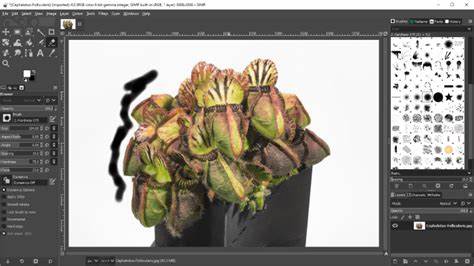GIMP, short for GNU image manipulation program, is an open source and free bitmap image editor for image photo editing and retouching, resizing, free drawing, photo montage, cropping, image format conversion and other professional jobs. This program is accessible on Windows, Linux, and macOS. Many people use it as a free substitute to Photoshop.
In the GIMP, there is an Eraser tool, which can remove the picture to background or transparency.
Method 1: Fuzzy select tool
The fuzzy select tool permits you to pick areas of an image based on color similarity. This technique works great if your images background has a various range of colors.
Grab the fuzzy select tool by clicking on the icon, or just press U on your keyboard.

With the tool picked, click and drag on your subject to make a selection. Drag the cursor to the right to raise the size of the selection and to the theft to reduce it. You can add to your selection by gripping shift and clicking on another area, and you can get rid of unwanted selections by gripping control and clicking on them.
This will make a dotted outline around your subject called as a selection. If you created the selection by background clicking, just press delete on the keyboard and you will have successfully used GIMP to remove your images background to transparent.
If you created the selection by subject clicking. You will just have your subject selected. Since you want to remove the background not the subject, just go to Select > Invert. Nothing will change visibly on the display when you do this
Method 2: Layer masks
The technique behind this is strip down your picture to black and white, and then adjust the color curves to make some separation between the foreground and the background. Once that is performed, we will use later masks to define the transparent areas.

This technique is perfect for cropping out subjects with perfect details like strands or fur of hair.
Method 3: Foreground select tool
This technique would also be a best option if your subject has a lot of fine details, like hair strands.
To get started, grab the Foreground select tool and manually draw an uneven outline around your subject. Don’t hesitate about it being precise, this is just meant to be an extremely rudimentary tracing. This will create a light blue area over your foreground and dark blue area over your background.

What you can perform now is manually brush in the subject areas, making sure not to get too near to the boundaries. You can reduce and increase the size of your brush by using right and left bracket keys. Again, don’t hesitate too much about this being a precise tracing. This can be a rudimentary, simple outline.
Once you are done, you can toggle the preview setting to view how it looks.
If you are happy with how it looks, press enter on the keyboard to change it into a selection. Then, invert the selection by going to Select> Invert, and then click on delete on your background to remove the background.

